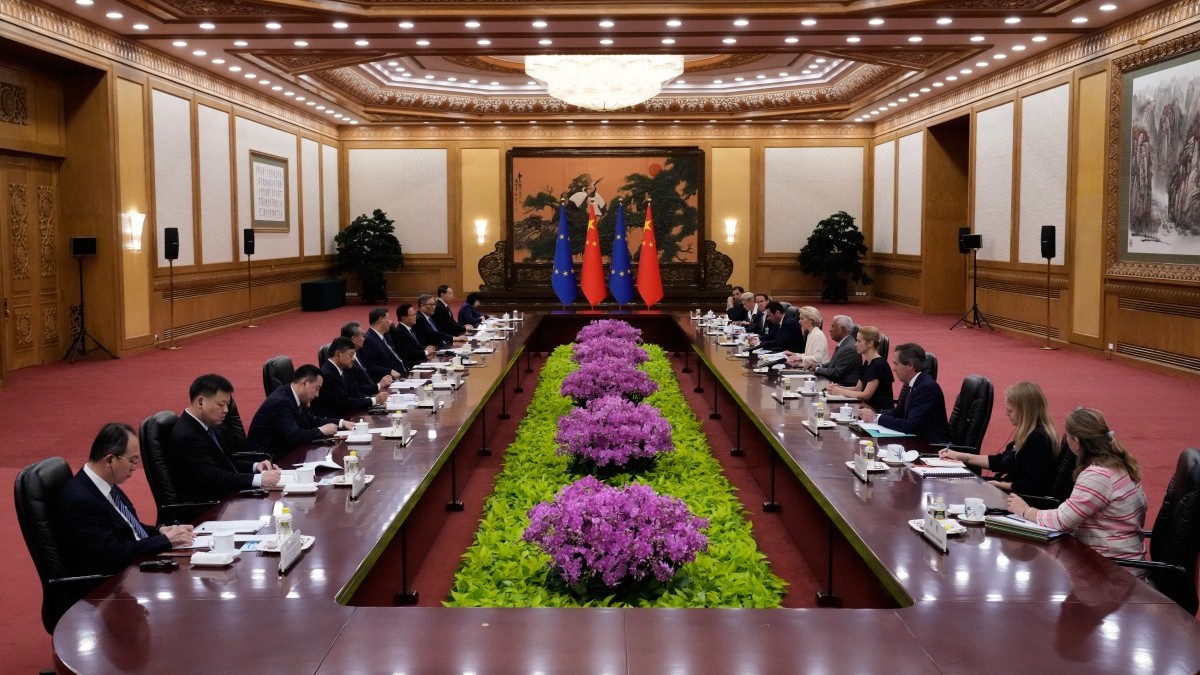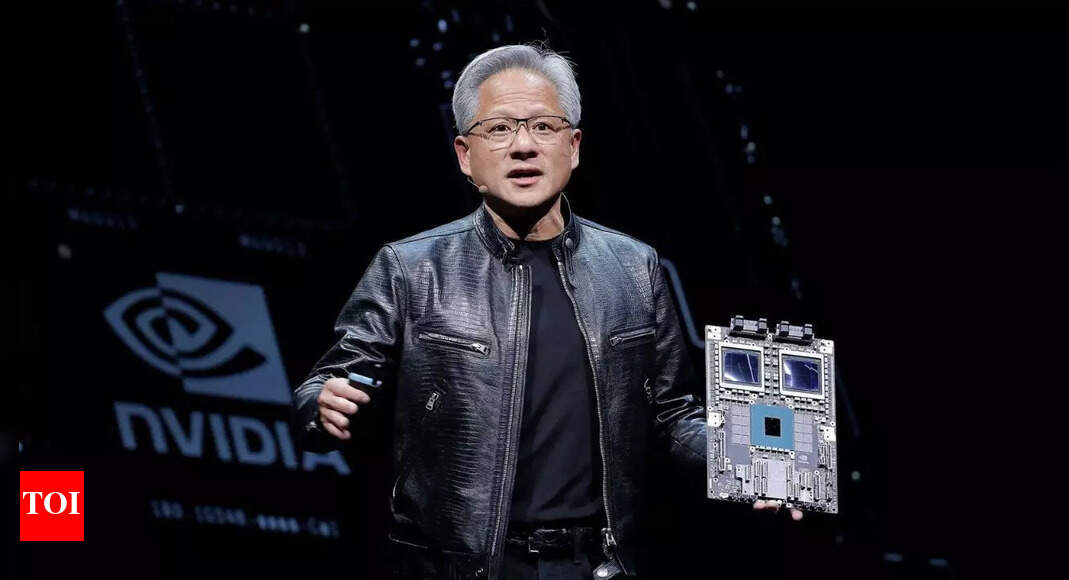Beijing will host a long-awaited and tense summit between the European Union and China this Thursday to mark the 50th anniversary of their diplomatic relations. The expectations of Ursula von der Leyen, António Costa, and Xi Jinping are low despite the meeting’s symbolic significance. The disagreements run deep, and the geopolitical interests are proving increasingly irreconcilable.
The meeting unfolds in a climate of mutual distrust. Brussels accuses China of stifling international competition through unfair practices, while Beijing denounces a “hostile” attitude from the European bloc, which it sees as increasingly aligned with the United States. The backdrop is the European Commission’s strategic shift toward the so-called de-risking policy concerning China, aiming to limit technological and commercial dependence on the Asian giant. One of the most sensitive issues is precisely technology.
One of the main friction points is the growing pressure to eliminate Chinese technology—especially Huawei—from 5G networks in Europe. The United States has led a global campaign against using Chinese infrastructure in critical sectors, citing national security risks.
Under von der Leyen’s leadership, the European Commission has intensified its recommendations to member states to restrict or exclude Chinese providers from their networks. This mainly affects countries like Spain, where Huawei has a strong presence. The most recent scandal in this regard has been the Spanish prime minister’s decision to install Chinese technology in departments handling sensitive data.
Brussels views allowing companies like Huawei to join next-generation networks as a fundamental security risk. Though the Commission does not have direct competence over the industrial policy of member states, it has exerted intense pressure through risk reports, resolutions, and conditional financing mechanisms. For China, such measures are unjustified and dictated by Washington’s agenda, reinforcing its perception of a strategically dependent EU.
Another battleground is trade. The EU has imposed tariffs on Chinese electric vehicles, arguing that state subsidies distort the market. Beijing’s response has been swift: investigations into European products such as brandy and pork, and veiled threats to restrict exports of rare earths, which are essential for European technology industries. China holds the upper hand here, as it is the leading country in processing these raw materials.
China is eager to stop this tariff escalation for economic reasons and because Europe represents a key geopolitical lever against the U.S. In this context, Beijing’s ideal objective would be to revive the EU-China investment agreement, which has been blocked by the European Parliament since 2021. Brussels, however, has been clear: there are no political or commercial conditions to resuscitate that deal. Trump’s tariff pressures are a counterweight, leaving Brussels caught between a rock and a hard place.
Ukraine: The great strategic obstacle
If economic tensions are high, the geopolitical clash is even deeper. The war in Ukraine has become the symbol of a systemic rivalry. Europe accuses China of enabling Russia’s war economy through supplies and diplomatic support. Beijing, for its part, denies any direct complicity but also refuses to condemn the invasion or join international sanctions.
Beijing has interpreted the inclusion of Chinese banks in the latest European sanctions package as a direct provocation. Commerce Minister Wang Wentao has formally protested to Brussels, while rhetorically insisting that Europe must “respect Chinese sovereignty and development model.”
In Brussels, a sense of paralysis prevails. After decades of geopolitical dependence on the U.S., the European Union is trying to find its own voice in its relationship with China, but room to maneuver is limited. The current U.S. administration’s erratic messaging on Asia does not help strike a balance, and EU member states lack a unified position.
In 2019, the EU defined China as a “partner, competitor, and systemic rival,” a formula that seems more confusing than helpful today. In its strategic security report, NATO has also included China as the main adversary beyond Russia in the short term. While some governments—like France or Germany—seek to maintain bilateral channels, others—like the Baltics or Poland—push for a hardline stance, particularly due to the tacit alliance between Beijing and Moscow.
Expectations: Few solutions, many signals
Everything suggests this summit will serve more as a diplomatic photo-op than a forum for tangible results. At the most, a joint declaration on climate cooperation is expected, but no breakthroughs on key issues. From the European point of view, what matters most is keeping a direct line of communication open and reinforcing the perception that the EU can and must speak with its own voice.
At the same time, the Union wants to make clear that it will not accept economic blackmail or technological impositions—though this is practically impossible given European companies’ nonexistent technological edge. The European agenda is increasingly focused on creating commercial defense tools—such as the anti-coercion mechanism—and shielding strategic sectors from foreign investment. China, by contrast, remains committed to its historic vision of “centrality restoration” and is unwilling to make concessions without reciprocity.
In short, this Thursday’s summit will not resolve the conflicts but will make them visible. And perhaps, in a fragmented world, that is already a step forward. Solutions begin with a proper diagnosis.


